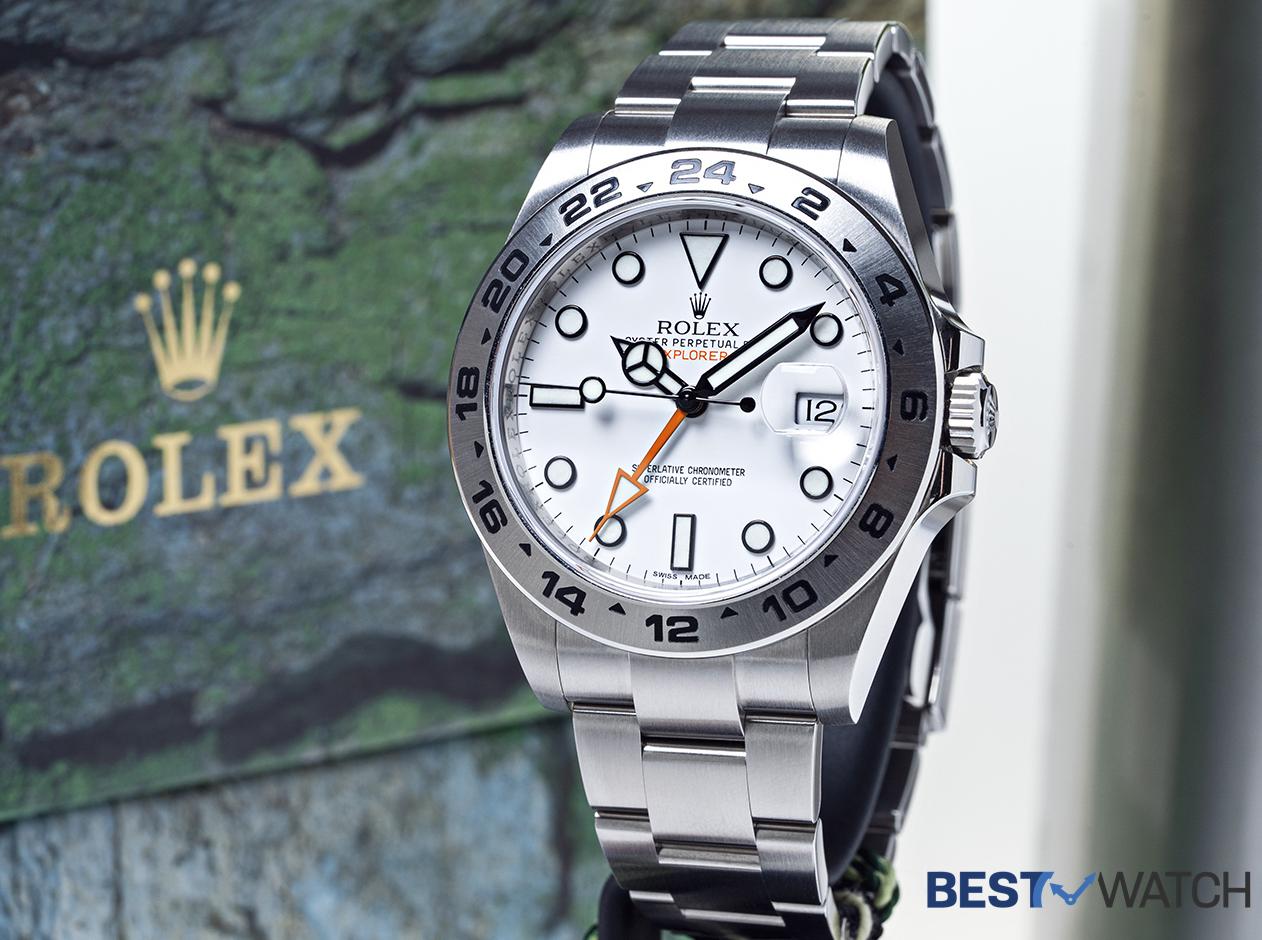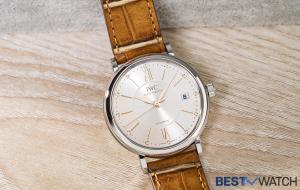
Introduction
The Rolex Explorer line has been dedicated to adventurers who explore harsh terrains like mountains, caves and snow-filled Polar Regions. Interestingly, this famed collection was debuted in 1953, the same year that marked the successful conquest of the Mount Everest by Tenzing Norgay and Edmund Hillary.
Belong to the Professional range of Rolex, Explorer remains underrated because of the overwhelming popularity of icons like Daytona, Submariner and GMT Master II. In comparison with other Rolex watches, the Explorer line produced a minimal number of references since its introduction in 1953. The collection contains two distinct ranges: Explorer (sometimes refers as Rolex explorer 1) and Explorer II.
Considered as the most undervalued Rolex sports model, Explorer is an excellent choice for beginners who love to collect spectacular timepieces made by the world’s top luxury watch brands. As on date, the Explorer family remains an influential collection from the iconic Swiss company.
History and Evolution of Explorer

Rolex Explorer Black Dial Stainless Steel Oyster Bracelet Automatic Men’s Watch 214270BKASO
1953, Rolex launched reference 6350, the first Oyster Perpetual Explorer watch. Meant for adventures and explorers, this timepiece featured 36mm diameter ‘Oyster’ case in stainless steel, self-winding movement and black dial. The other version produced during the 1950s was the reference 6150, in which some models do not display ‘Explorer’ name on the dial. In the 1950s, the reference 6610 was also introduced. This Explorer watch is equipped with Caliber 1030 self-winding movement.
1963, Rolex introduced the reference 1016, with earlier production models equipped with Caliber 1560 and later batches with caliber 1570. It is one of the longest produced Rolex watches. The reference 1016 is the first Explorer with 100m water resistant. Its ancestors had 50 meters water resistance.
In 1989, the ref. 14270 was launched. The ref. 14270 is an Explorer model with 36mm diameter case, sapphire crystal glass, glossy black dial and caliber 3000 self-winding movement.
In 2001, Rolex introduced reference 114270, a new Explorer watch with caliber 3130. It was the last Explorer model with the 36mm case. In 2010, the reference 214270 was released. This new generation explorer watch features a 39mm stainless steel case, black dial and caliber 3132. It has two dial versions: MK1 and MK2. The MK1 dial variants contain non-luminous 3-6-9 markers and MK2 versions feature luminous 3-6-9 markers.
History and Evolution of Explorer II

Rolex Explorer II White Dial Stainless Steel Oyster Bracelet Automatic Men’s Watch 216570WSO (White)
In 1971, Rolex introduced Ref.1655, a new Explorer watch equipped with a fixed 24h bezel, date window at 3o’ clock and an additional hour-hand. With two separate hour hands, the timepiece provided the precise tracking of day-time and the corresponding night time, which is very helpful for speleologists, spelunkers and miners. This 39mm, stainless steel model marked the launch of the popular Rolex Explorer II watches.
In 1985, the brand replaced the model 1655 with the reference 16550, a new Explorer II watch with 40mm diameter steel case and an independently adjustable 24-hour hand. Equipped with the Caliber 3085, this Explorer II was made available in black and white dial versions. In 1989, the reference 16570 was introduced. Equipped with the Caliber 3185, the ref.16570 replaced the Rolex Explorer II reference 16550. The Rolex Explorer II 16570 models produced from 2007 to 2011 were outfitted with the caliber 3186.
In 2011, Rolex launched reference 216570, the latest Explorer II watch with 42mm diameter stainless steel case featuring large crown guards and wide lugs. Equipped with the Caliber 3187, this new reference is available in black and white color versions.
Design Highlights

Rolex Explorer II White Dial Stainless Steel Oyster Bracelet Automatic Men’s Watch 216570WSO (Black)
The Rolex Explorer watch boasts some impressive design details. The most important among them is the so-called Explorer dial, which is a stand-out feature of all Explorer watch models. It traditionally refers to a specific dial layout with numeral hour markers at 3,6 and 9, inverted triangle hour-marker at 12 and rectangular indices for the remaining hour-markers. This minimalistic dial with highly legible hour-markers amply provides a clear view of time display along with the large, luminescent hands. Most of the Explorer references feature Mercedes hour-hand, which is a characteristic attribute of Rolex professional watches.
All Explorer watches use Oyster case design for ensuring optimum water resistance. Both robust and comfortable, the Oyster bracelet is fitted with an Oysterlock folding clasp, which typically prevents accidental opening. The Easylink comfort extension link allows the wearer to increase the bracelet length by approximately 5 mm. Its self-winding movement (the Caliber 3132) is a certified Swiss chronometer and provides 48 hours power reserve.
Water resistant to 100 meters, the Explorer watch incorporates Monobloc middle case, screw-down case back, Screw-down crown with Twinlock double waterproofness system and Scratch-resistant sapphire glass. The new generation Explorer features the proprietary Chromalight lume, which emits a long-lasting blue glow.
Explorer Vs Explorer II
Known for their sober and graceful lines, all Explorer (Rolex Explorer I) watches maintain the classic ‘Time Only’ layout, with three centre hands. Introduced in 1971, the Explorer II is more functional because it also displays the date and second time-zone. In comparison with Explorer, the Explorer II watch additionally features a fixed bezel with 24H graduations and an extra hour-hand to track a second time-zone. The present generation Explorer (ref. 214270) has 39mm case and houses the calibre 3132 self-winding movement whereas the latest Explorer II watch has 42mm diameter case, with the Caliber 3187 beating inside.
Popular Explorer Models
Among all the Rolex Explorers produced to this date, the reference 1016 is the best-selling model. It undoubtedly enjoyed a long production run starting from 1963 to 1989. The references like 14270 and 114270 as well as the current production model 214270 are equally popular. The historic references like 6350, 6150 and 6610 are the most valued Explorer watches in the Vintage watch market.
Buying Tips

At present, Rolex offers the Explorer model 214270 with a black dial. All other models introduced prior to these references have been discontinued.
Introduced in 2010, the new generation Explorer watch (ref. 214270) comes with a 39mm diameter case made of 904L stainless steel. As on date, it is the only Explorer I watch with a 39mm case. All its ancestors have 36mm cases. Its polished, smooth bezel radiates the vintage appeal of the Explorer family. Driving this timepiece is the calibre 3132, a self-winding mechanical movement entirely developed and manufactured by Rolex.
Before proceeding to purchase the reference 214270, you should be aware of two types of dials. The watches that produced until 2016 have small minute-hand and non-luminous 3-6-9 hour markers. Whatever may be the reason behind it, the length of minute-hand was not proportional with the dial size. This dial style is known as MK1. In 2016, Rolex replaced this dial with MK2, which has luminous 3-6-9 hour markers and longer minute hand.
Some customers prefer the Explorer with MK1 dial for its unusual yet classy look. The customers, who love the original design codes of the collection, favor MK2 dial versions. Presently, the selling price of MK1 is than the MK2 variant. The retail price of a Rolex Explorer 2016 model with MK2 dial is approximately HK $89,000.



Leave A Reply
Your email address will not be published.
Thank you for your comments
We have received your comment and it is being processed.Oops, Something Went Wrong
Please try again later.